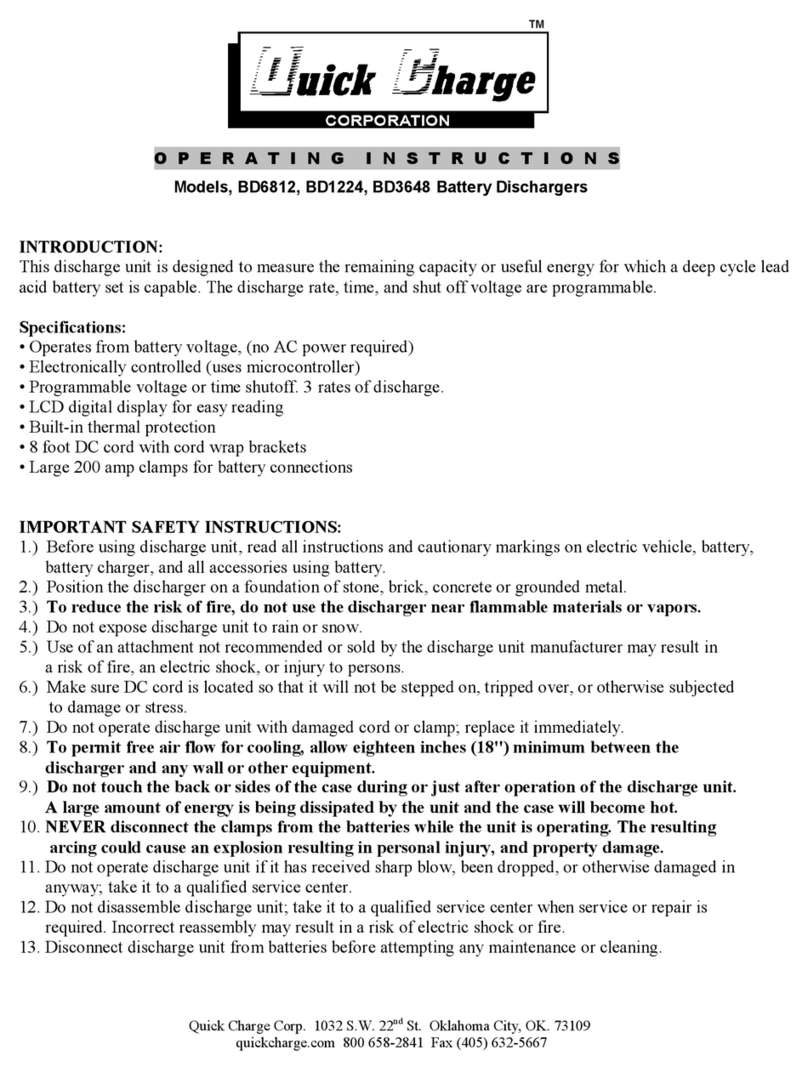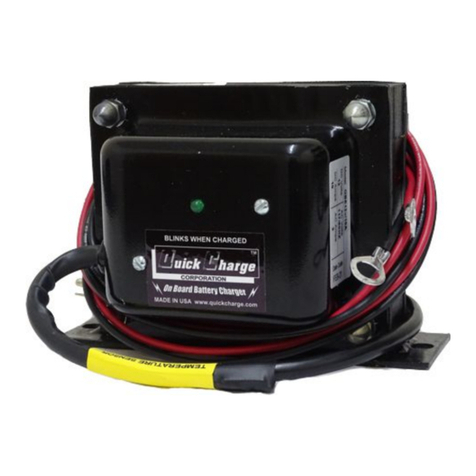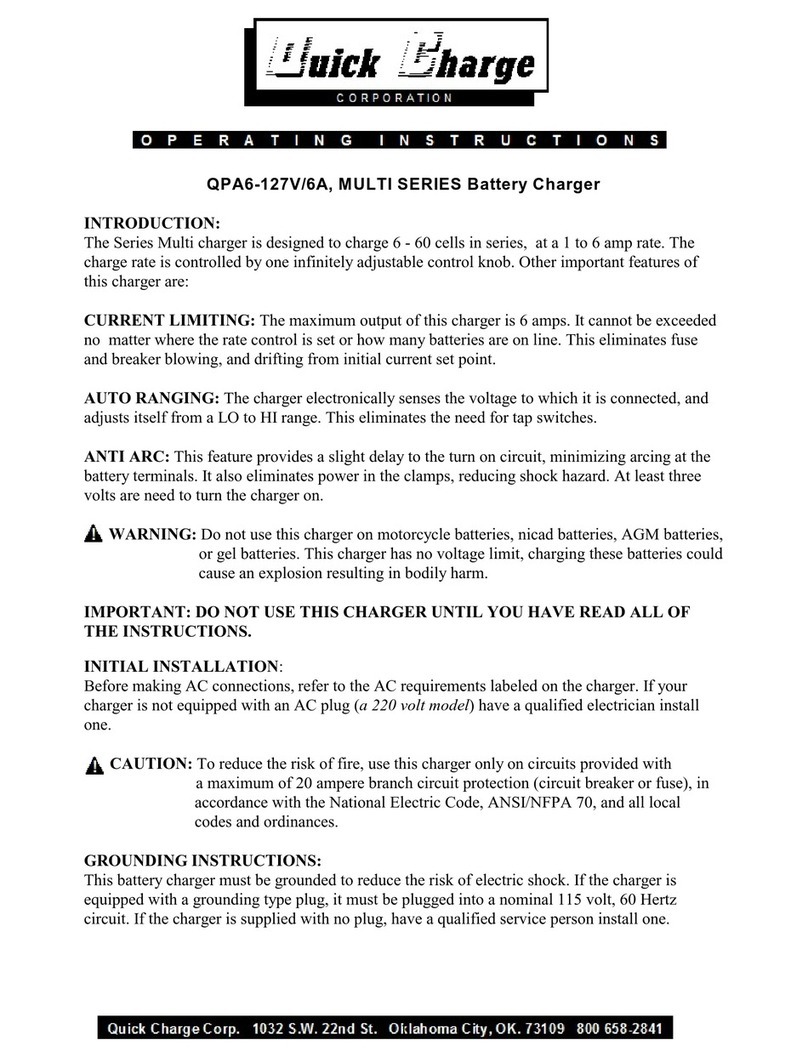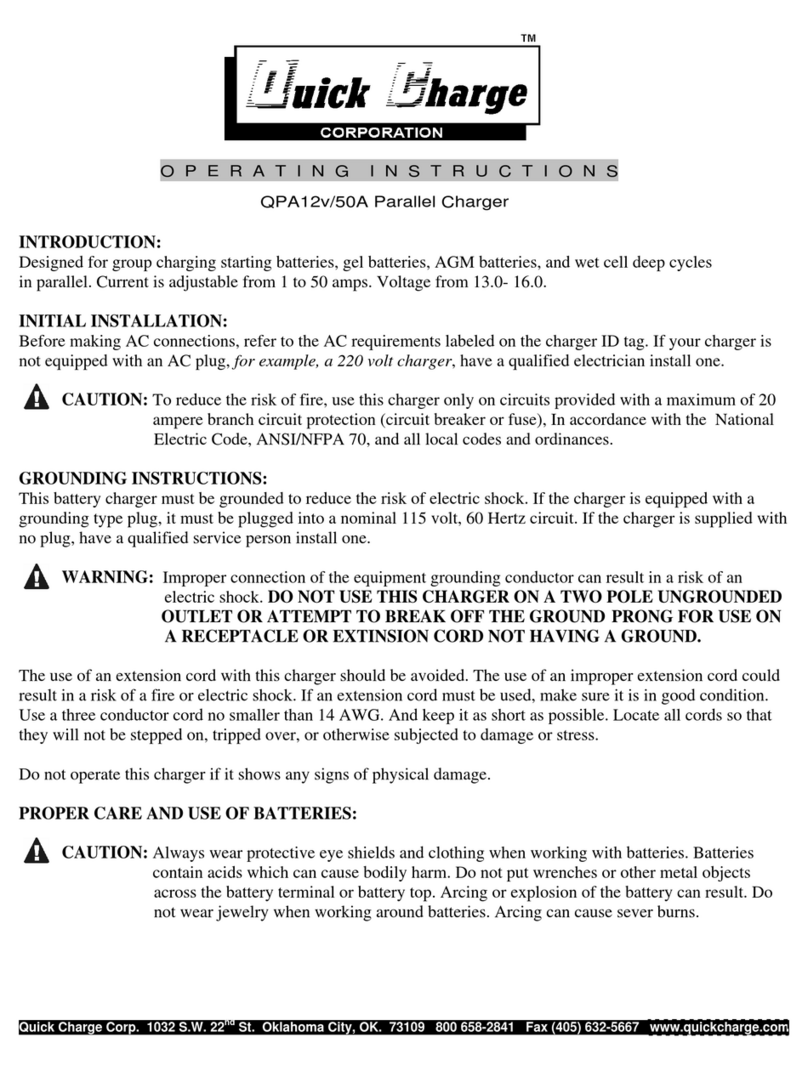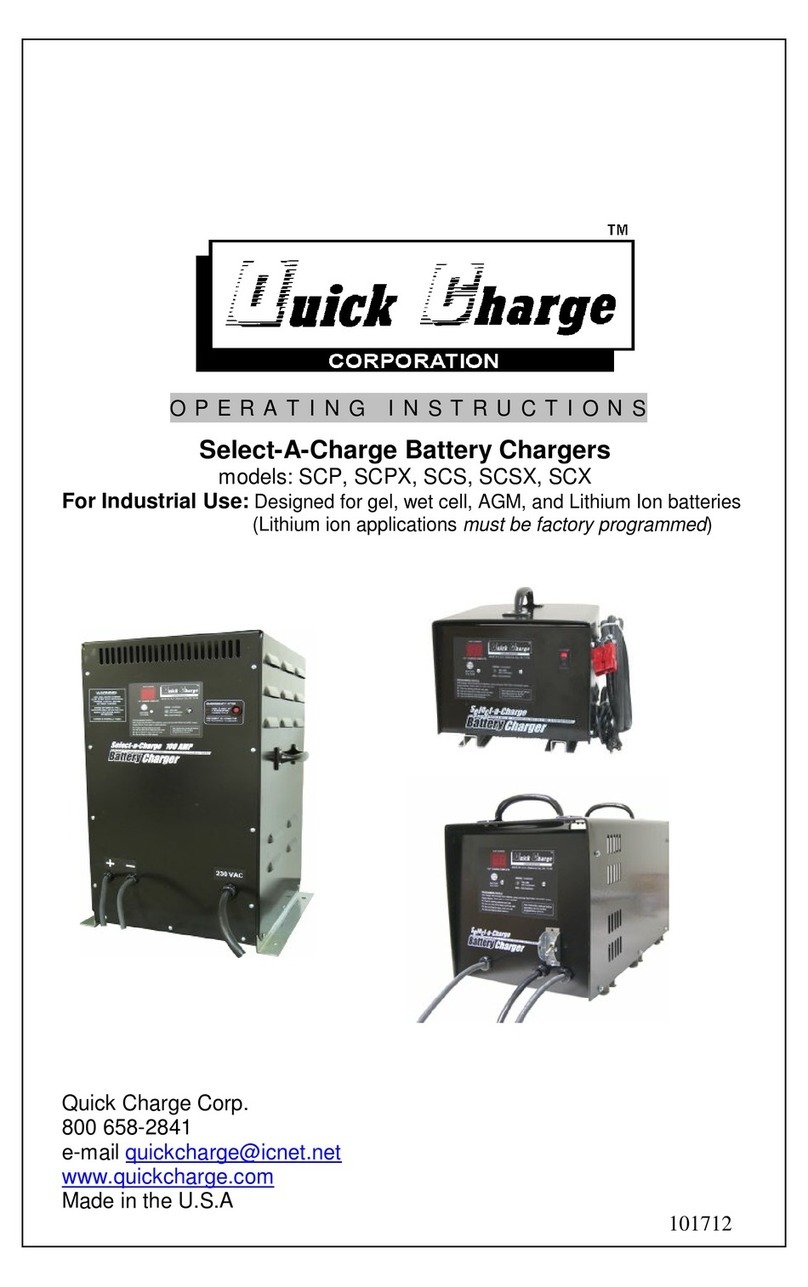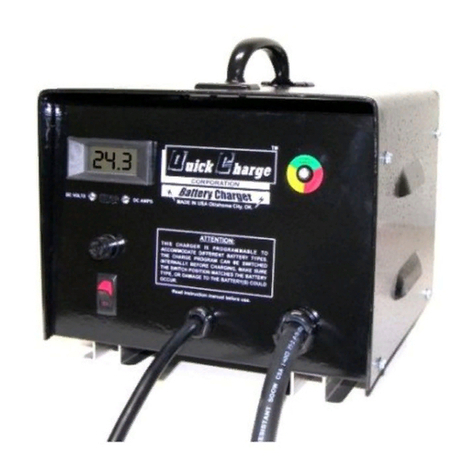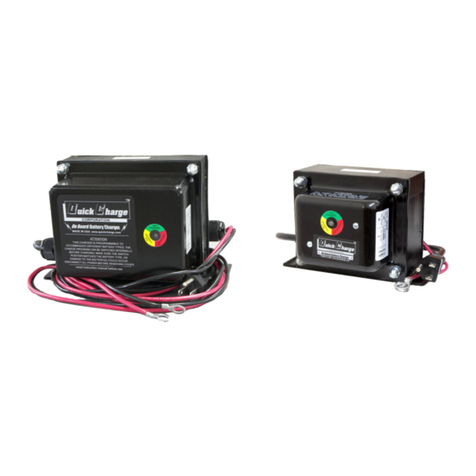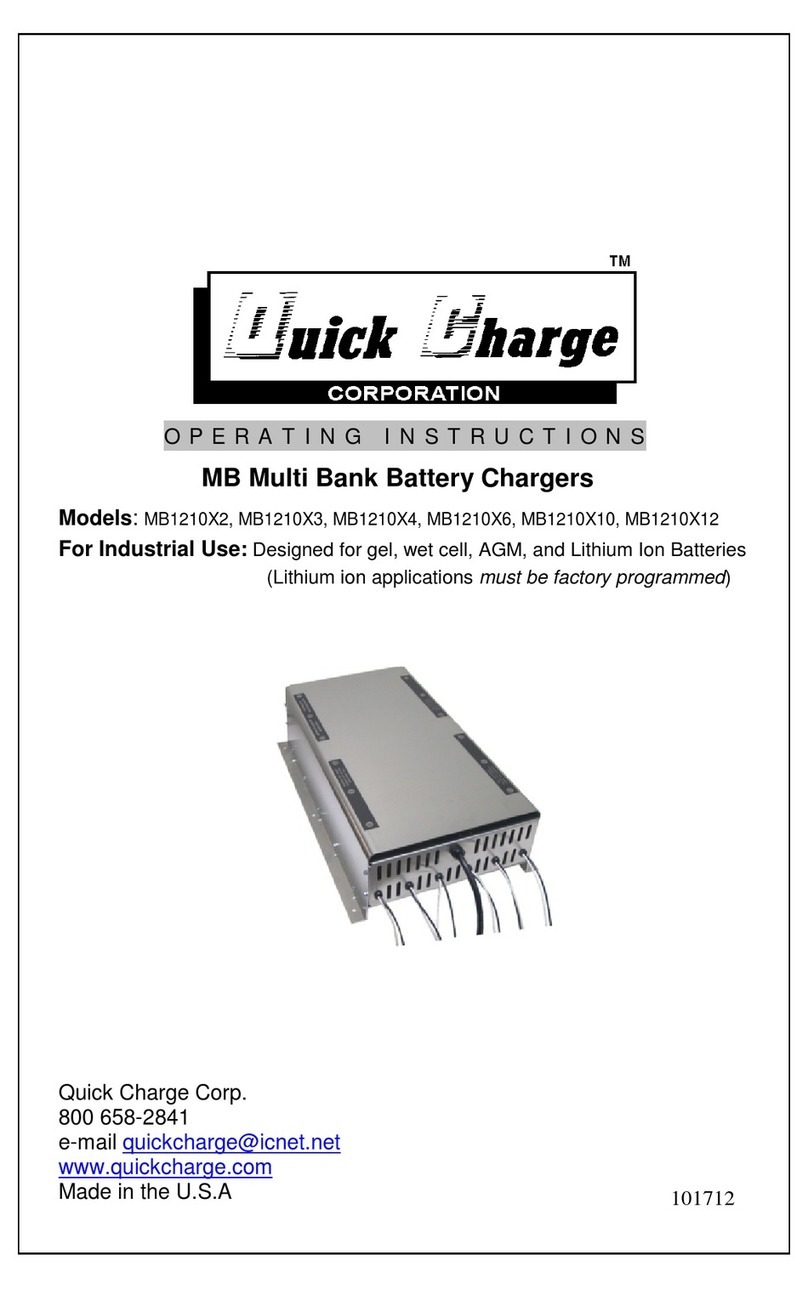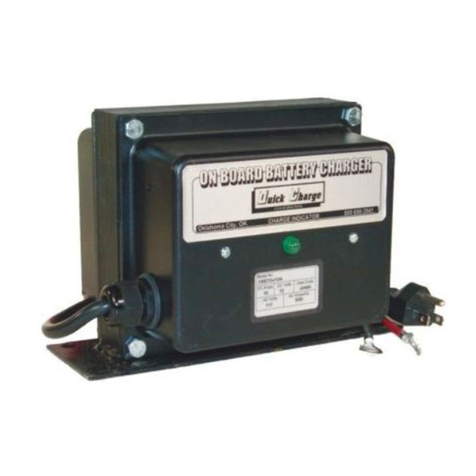
4
Place a volt meter across the battery terminals where the charger is connected. Apply AC
power. If the voltage rises on the battery, the charger is working and the LED is defective.
NOTE:
LED s do not burn out, but it has probably received a sharp blow causing physical
damage. No harm will come from operating the charger without a working LED.
2).
LED NEVER GOES OFF
The batteries never reached timer trip voltage and the charger was unable to gas and shut off.
This indicates several shorted cells. Overheating and excessive water usage are symptoms
of this condition. Performance will also be greatly diminished. Replace defective battery.
3).
AC LINE OR CIRCUIT BREAKER BLOWS
Either the circuit breaker or fuse is weak, or the charger is shorted internally.
4).
NO POWER IS PRESENT ACROSS THE DC LEADS WHEN A VOLT METER IS
CONNECTED
Good. The charger will not turn on until leads are connected, correct polarity to the battery.
5).
BATTERIES DON T RECEIVE FULL CHARGE
The battery you are charging may be to large for the charger, or if you have the charger
plugged into a long extension cord that is too small, a voltage drop will cause a decrease in
charger output, extending charge times.
QUICK CHARGE OBET Battery Chargers
LIMITED WARRANTY
Quick Charge corporation warrants the OBET line of chargers for three (3) years from the date of purchase.
After the warranty period, chargers returned to the factory for repair will be charged a minimum rate of $25.00. Charger will be
returned, freight and repair charges, C.O.D. unless other arrangements have been made
This warranty covers all defects in manufacture and performance, provided the unit is operated in compliance with manufacture s
operating instructions.
For repairs to be made at the Quick Charge factory, a charger and/or component(s) should be sent, freight prepaid to Quick
Charge at:: Quick Charge Corp.
1032 S.W. 22nd St.
Oklahoma City, OK. 73109
Quick Charge, will at it s option, repair or replace the charger or component in question. The repaired item will then be returned,
freight prepaid by Quick Charge. This warranty is void if the charger or component have been altered, changed, or repaired by
anyone not authorized by Quick Charge, or if the charger or component, have been subjected to misuse, negligence, or harsh
environmental conditions. (Except those chargers designed for such conditions)
If returning the charger to the factory is not practical, replacement parts may be shipped to the customer for field repair at no
charge. On parts such as circuit boards, the customer will be required to return the board suspected to be defective to Quick
Charge, freight prepaid. If such defective parts are not returned, the customer will be invoiced for the repair parts.
Field repairs are made at the user s own risk. Authorization by Quick Charge to repair refers to maintaining the warranty only.
Quick Charge assumes no responsibility or liability for field servicing, and shall not be responsible for incurred travel or labor
charges.
Quick Charge corporation shall not in any event be liable for the cost of any special, indirect or consequential damages to anyone,
product or thing. This warranty is in lieu of all other warranties expressed or implied. Quick Charge neither assumes nor authorizes
any representative or other person to assume for us any liability in connection with the sale of this product.
